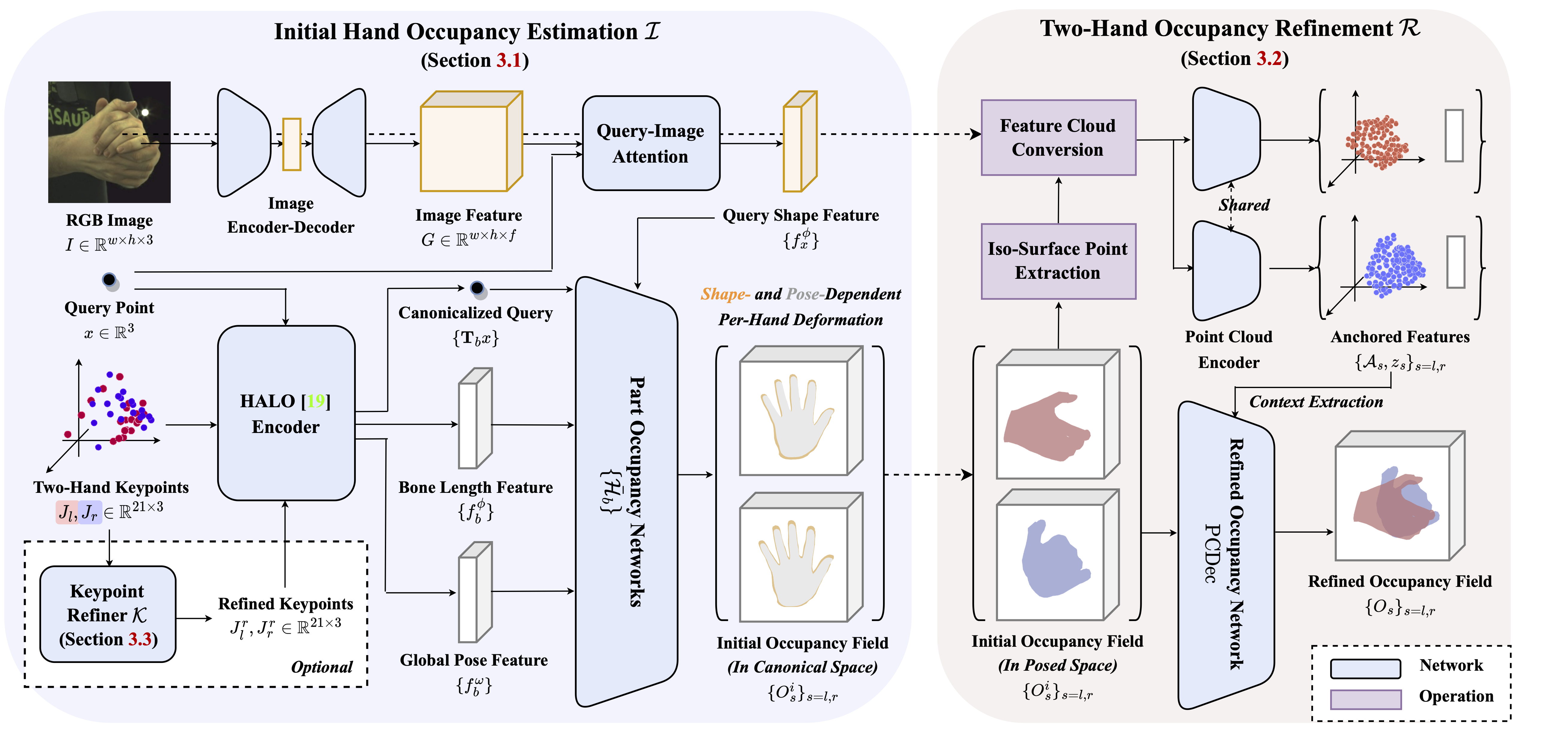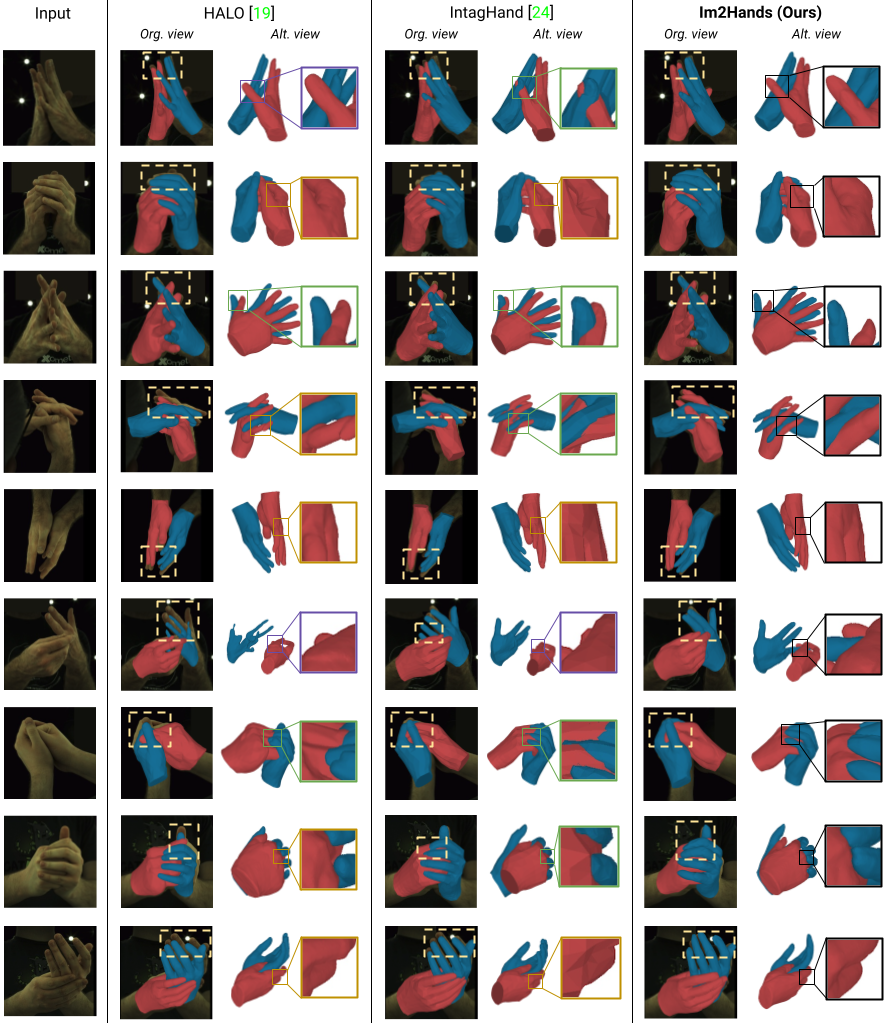Abstract
We present Implicit Two Hands (Im2Hands), the first neural implicit representation of two interacting hands. Unlike existing methods on two-hand reconstruction that rely on a parametric hand model and/or low-resolution meshes, Im2Hands can produce fine-grained geometry of two hands with high hand-to-hand and hand-to-image coherency. To handle the shape complexity and interaction context between two hands, Im2Hands models the occupancy volume of two hands - conditioned on an RGB image and coarse 3D keypoints - by two novel attention-based modules responsible for initial occupancy estimation and context-aware occupancy refinement, respectively. Im2Hands first learns per-hand neural articulated occupancy in the canonical space designed for each hand using query-image attention. It then refines the initial two-hand occupancy in the posed space to enhance the coherency between the two hand shapes using query-anchor attention. In addition, we introduce an optional keypoint refinement module to enable robust two-hand shape estimation from predicted hand keypoints in a single-image reconstruction scenario. We experimentally demonstrate the effectiveness of Im2Hands on two-hand reconstruction in comparison to related methods, where ours achieves state-of-the-art results.


